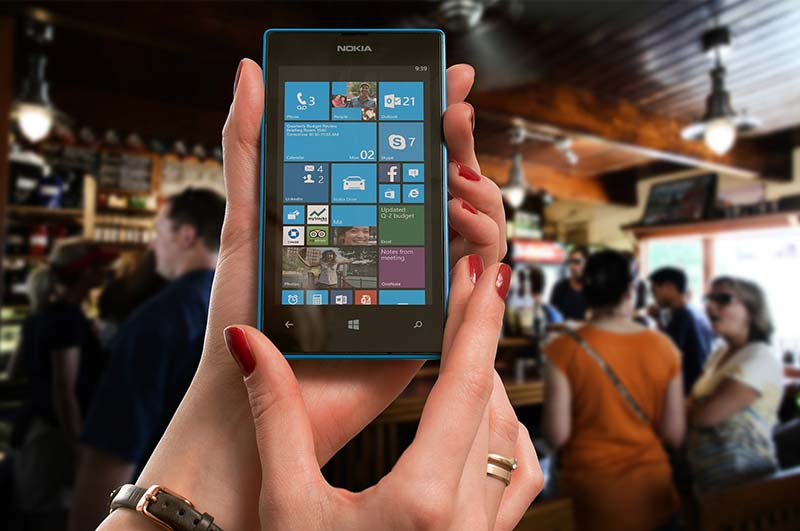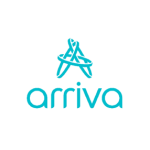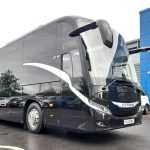A five-minibus commercial pilot of demand responsive transport by Arriva in Kent has generated sufficient data to convince the group that DRT has a major future role in the provision of ride sharing

Five silver Mercedes-Benz Sprinters in the Garden of England potentially herald the start of a major change in the part that minibuses play in delivering ride-sharing solutions throughout society.
That’s according to Arriva. The multinational transport giant began a small-scale pilot of its ArrivaClick demand responsive transport (DRT) platform in Sittingbourne a little over a year ago, and since then it has learned a great deal from the data generated.
ArrivaClick is – at the moment – a simple and straightforward product for users.
Via an app, they ‘call’ a minibus, and they are given an ETA and a fare in return. If both are to their liking, they accept. The fare is paid, the minibus arrives and it takes them to where they want to go.
The period has given the group sufficient confidence to launch a second ArrivaClick operation. Where has not yet been revealed, but it will be bigger than the Sittingbourne trial, and Arriva aspires to absorb some elements of community and social transport in the long term.
Experienced already
Key to ArrivaClick’s success is that DRT is not new to the group. Although it may be considered a bus and train operator, it actually has six years’ demand responsive experience, says Business Development Director Demand Related Transport Asiya Jelani.
“Establishing Arriva Transport Solutions in 2012 gave us a much greater capability than fixed-route bus. Non-emergency ambulance services are DRT by their nature,” she explains.
Many of the skills that the group gained from patient transport have been transferred to ArrivaClick. That leaves the concept in a good position to grow further in the future.
“We have a competence in flexible transport, and a control room that is staffed by experts. They constantly monitor the platforms and the systems that are involved in the creation of demand, and our response to it.”
Learning quickly
The Sprinters used in Sittingbourne have been converted to a high standard by EVM. They are accessible minicoaches, not minibuses, but Asiya suggests that future purchases will have a much more simple wheelchair user boarding procedure.

Currently, the pilot utilises a strictly commercial model. Each user pays a fare and the principal traffic generator is Kent Science Park, around three miles from Sittingbourne.
As a result, the service is relatively peaked. All five 16-seaters are in use during and around the traditional workplace start and finish times.
In between those periods, and after the evening rush, they drop in and out as required to cover drivers’ breaks and shift changes, leaving spare capacity that Arriva is keen to use for other applications.
“What we have learned so far is that ArrivaClick is not a panacea. But what it could do is ‘blend’ some complementary services, such as community and social transport, into the mix,” says Asiya.
By that, she means utilising the vehicles creatively outside the peaks, but not necessarily removing them entirely from the commercial platform in the process.
Arriva believes that it is entirely possible to have a community transport user, a social transport passenger and a commuter aboard the same vehicle. Each may have funded their travel in different ways, but it is eminently doable, Asiya adds, and the clever software platform that ArrivaClick is built on is key to bringing all those strands together into a useable and efficient product for passengers.
“The future is definitely about ‘blended’ vehicles, but there are a number of steps before we get there that link to service management and, most importantly, commercial realities.
“In Sittingbourne, ArrivaClick is a commercial offering for fare-paying passengers. We have used it to test the capability of the product and our ability to deliver a different operating model.”
Technology in the lead
A further important part of the testing phase relates to the technology behind ArrivaClick. It generates huge amounts of data that can be used to consistently improve the product. The technology platform also allows simple communication.
The core technology has been developed by US firm Via. Unlike that behind services such as Uber and Lyft, it is designed specifically around aggregating and sharing rides.
Three elements make up the platform: The user app, the back-end system that is in overall control, and an interface for drivers.
Central to ArrivaClick is all vehicles being equipped with an iPad Mini.
Users allocated to each minibus flag up on them, and their control of service delivery extends to giving turn-by-turn instructions to drivers, ensuring that the minibus is facing the correct way for the next pick-up or drop-off.
“Once a user has accepted an ETA and fare, they can track the minibus. Two minutes before it arrives, they receive a text message with the registration number and the driver’s name,” says Asiya.
“If nobody is at the pickup point, the customer is sent another message. They also get the driver’s masked phone number, or they can call the control centre. The controllers do a lot of messaging with customers.”
That level of involvement gives a further insight into how ArrivaClick could encompass community and social transport in time. But Asiya is clear that the operator only regards it as suitable for fully-able-bodied users in those sectors. Passengers who require a high level of care are best served by specialist providers.
Engagement with LAs
The prospect of engaging with ArrivaClick is an enticing one for local authorities (LAs). Arriva has already spoken to several of them, but public sector procurement rules do not make it easy to launch such a degree of change in social transport provision.
What is certain is that ArrivaClick will not be taken up by numerous LAs at once. Commercial considerations mean that it will grow into new territories in a staged way, and the positive response already received will help to smooth that passage.
Furthermore, Arriva has an established relationship with the Community Transport Association (CTA), principally through Arriva Transport Solutions.
“We have spoken to the CTA about ArrivaClick,” says Asiya.
“It is keen to support the idea; it is a good opportunity for the sector. If and when we enter a particular location, then that would be the time to open a dialogue with individual community transport operators (CTOs).”
In some areas, that may see Arriva also working with taxi operators as part of delivering an overall service, but CTOs should not view ArrivaClick as a threat.
“We see expanding ArrivaClick into other sectors as a way to help LAs become more efficient, and to maintain transport services that may be under threat.
“But we would still need partners; we want to work, rather than compete, with other organisations.”
Other aspirations
Besides growing ArrivaClick into other markets, the group has aspirations to take advantage of developing technology to advance it operationally. In the short term, integration with rail services is a priority. In Sittingbourne, that has its challenges, but in other locations, where Arriva operates rail franchises, it will be much simpler.
“Our regional bus Managing Directors are watching ArrivaClick very closely, and the same is true of our train operating company (TOC) MDs,” says Asiya.
The rail industry’s ‘first and last mile’ challenge is why, but merely using minibuses on short-distance journeys to and from rail hubs is unlikely to stack up commercially. There, again, is part of the impetus to grow ArrivaClick into a variety of transport sectors.
“If ‘first and last mile’ journeys can be one of a number of usage cases for ArrivaClick then it absolutely could work. Arriva-owned TOCs in particular are keen to explore integrated ticketing, although the technology behind that is a challenge.”
A trial involving an Arriva TOC is likely. If it is successful, it will lay the foundations for expanding the concept to include TOCs that are outside the group.
An electric future?
Taking advantage of vehicle technology developments is also on the ArrivaClick to do list, but the adoption of alternative energy sources hinges on them becoming commercially viable.
“If we’re serious about ride sharing being part of the solution to air quality issues, then there can be no doubt that it has to be combined with zero-emission vehicles that are battery- or hydrogen-powered,” Asiya continues.
If Arriva can balance the short-term additional cost of zero-emission, it is certainly the future of ArrivaClick. But that uplift is the conundrum.
The group is proud to say that unlike some other app-based ride services, ArrivaClick is not a ‘gig economy’ employer.
Its drivers have full-time contracts with terms and conditions that are comparable to those of Arriva’s bus drivers. To put additional vehicle cost on top of that is difficult.
“But long term, it is the answer. When Arriva UK Bus MD Kevin O’Connor has spoken about ArrivaClick, he describes DRT as something that we can do now. Think about it a bit more, and it becomes the precursor to automated vehicles,” she says.
“The methodology of how people will use those vehicles will be to call one and get on it, which is what we’re doing now. ArrivaClick is the start of a behavioural change.”
Autonomous, zero-emission minibuses are still a way off, but Arriva already has a blueprint that it thinks will see them become a reality. Through its plans to encompass other transport sectors as part of that journey, it’s well on the way to spreading those benefits across society.


























